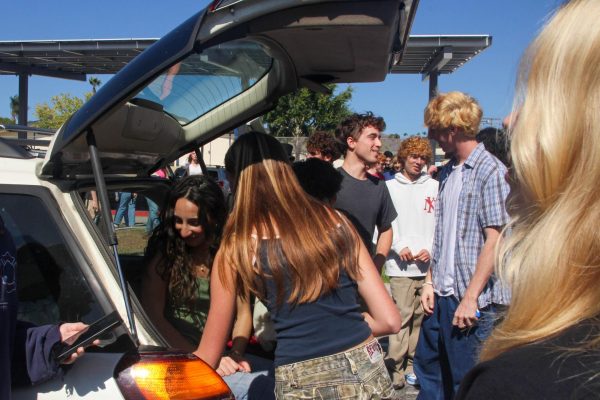A guide to Advanced Placement Environmental Science
Advanced Placement Environmental Science is an engaging class discussing topics of biodiversity, Earth systems and sustainability.
April 25, 2022
Every year at the beginning of the second semester, Foothill Tech students are asked to sign up for classes to take the following year. We decide on courses that sound interesting to us, or, in many cases, courses that will make us more appealing to colleges. However, a large amount of the time, students sign up for courses without any idea of what those courses will consist of. Only given the name of the course and possibly who it is taught by, students are left with little knowledge to draw on and have no understanding of the topics they will be learning, how interactive the class will be or the amount of time and energy that this class will require. So, if you are taking some Advanced Placement (AP) classes in which you have no idea what to expect, here is the first of many articles to help shed light on some of the AP classes offered here at Foothill.
If you are taking the blind plunge into AP Environmental Science next year and don’t know exactly what to expect, here is a guide to help you get a better understanding of what you will be learning.
AP Environmental Science teaches students a wide plethora of environmental concepts. Levi Davis ‘22 states, “So far we have covered ecosystems, biodiversity, populations, Earth’s systems, land and water use, and now in class we are focusing on sustainable food sources and limiting food waste.”
The course is perfect for those who not only desire an understanding of the interaction between humans and the Earth, but also for those who want to learn about how they can become more responsible when using the Earth’s resources. When asked about what she wants to see from students taking the class, Emily Hunt, the teacher of the course, states, “I would love for them to just be more cautious and aware of how their actions affect our community locally and globally.
However, even for those who are not as passionate about the environment, the class is still a great option. Hunt shares, “The thing that I like about the class is that it’s a combination of science, social studies, and business … I find it to be a really helpful course for students who are interested in all different fields.”
The class’s interactive approach to learning about the environment grabs students’ attention and keeps them engaged in the material. Davis states, “ Mrs Hunt really makes an effort to sign us up for field trips and makes her class really hands on with labs, documentaries and engaging learning. It is a really easy class for a teacher to tell us to read the textbook and answer questions, but the hands-on learning aspect of it makes it so much easier to learn, and I recommend it to any one who is debating whether to take it or not.”
This is the perfect course for those who want to take an AP class with a busy schedule. The class is not demanding, as most of the work is done in class. According to Hunt, when it comes to homework, there is around one to two hours of homework per week, which is a relatively small workload for an AP class. However, this does not detract from the significance of the curriculum as it covers important topics.
AP Environmental Science is a fantastic option for an AP class. Between covering a wide variety of topics and allowing students to have flexibility in their schedules, it is a brilliant course that many students have come to enjoy.
















Mrs. Hunt • Apr 26, 2022 at 3:48 pm
Ah thanks Foothill Dragon Press for spreading the word about AP Environmental Science. I truely LOVE teaching this class. It was my first year teaching the entire curriculum as this program was started in 2019-2020. I am so thankful for all that I have learned and excited to see even more opportunities next year.